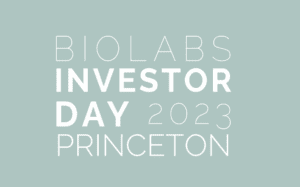
Industry Experts Weigh in on Why Philadelphia’s Life Science Real Estate Market is Booming
Philadelphia’s soaring life sciences commercial real estate market is being driven by the combination of strong demand for advanced lab and manufacturing facilities and near record low vacancy rates. Bio Investors are increasingly placing big bets on Philly as a stellar site for IPO-bound emerging cell and gene therapy companies, many poised to spread their wings and expand their operations into stunning and spacious state-of-the-art quarters.
Suburban Philadelphia-based CRB Group, an internationally recognized engineering and construction firm specializing in life sciences, has been serving the market for decades and has witnessed first-hand the significantly increased demand from regional biotech companies to modify existing space and develop new facilities, especially for cell and gene therapies, said Brian Kirk, director of business operations.
“This is consistent with many market indicators that show a general shift from large bulk biological facilities to more personalized medicine,” Mr. Kirk explained. “Along with this shift, there is also a growing need for facility flexibility and speed which is putting pressure on firms like CRB to develop new designs and execution approaches that can answer those needs.”
Vacancies in Philadelphia’s central business district are currently under one percent, according to Tim Conrey, senior vice president at Scheer Partners, a leading commercial scientific real estate firm based in the Capital Region. Scheer, after considerable national market analysis, recently opened an office in Philadelphia, just off the R&D-focused campuses of the University of Pennsylvania and Drexel University. Mr. Conrey, noting that vacancy rates in the suburbs appear mired in the low teens, said fast-track biotech businesses are attracted by the downtown’s affordability, ease of multi-modal access – including on foot, bike, or transit – and access to one of the nation’s highest concentrations of Ph.Ds.
He said build-out times on spec buildings are usually more than two years, and that companies that cannot wait often default to New Jersey, where spaces are available but at much higher prices and without the other attractive amenities of Philadelphia.
One of those key lures is Philadelphia’s comparatively low cost of living and lower taxes than its Amtrak BOWASH corridor counterparts New Jersey and New York. For autologous cell therapy companies, location is an important factor to better manage the logistical challenges that personalized cell therapies face, and Philadelphia is an ideal central location within just hours of major medical center in metro areas along the East Coast.
“In Philadelphia, there is a world leading academic medical center producing many of the latest technologies in cell and gene therapy and a continuous flow of PhDs that are experts in the field,” Mr. Conrey said. “The only surprise is that anyone is still surprised that Philadelphia’s is such a hot place for life sciences commercial real estate. To Scheer, opening an office there made perfect sense, and we’ve been very busy from day one.”
Philadelphia’s brand includes the distinction as “The City of Firsts”. Besides hosting the nation’s first hospital (Pennsylvania Hospital), it also boasts a roster of outstanding cell and gene therapy companies. Perhaps its best-known pioneer is Spark Therapeutics, which was awarded the first FDA-approved gene therapy for a genetic disease, in addition to Adaptimmune, Passage Bio, and many others that have created a very strong ecosystem and support structure to help companies succeed.
“If you look at the academic centers we have here at Penn, Jefferson, Drexel, and Temple, among other institutions, there is a confluence of cell and gene therapy research that’s going on here that’s far and away globally on the leading edge,” Mr. Conrey added.
He explained that the increased demand for flex spaces is primarily due to discovery companies also shifting into the manufacturing side of the business. While many of those companies are still looking for lab spaces, Mr. Conrey said he sees more and more life sciences businesses looking to run their own clinical trials. Another incentive is that contract manufacturing organizations (CMOs) currently have long waitlists that sometimes require a payment just to “take a number”.
“Our client, Imvax, a leader in developing therapies to conquer the highly-lethal brain disease glioblastoma, is an excellent example of a promising life sciences company that recognized the need to include production for Stage 2 clinical trials under one roof. “Time is of the essence when dealing with Imvax’s trial participant so waiting for a CMO to handle production was a non-starter.”
While CMOs might need vast spaces – hundreds of thousands of square feet – to run trials, Mr. Conrey said cell and gene therapy companies often only need about 20-30,000 square feet of space. However, companies must optimize that space for manufacturing. Floors need to be able to support heavy live loads, and proper ventilation is a must.
Traditionally those specs were most often met in the suburbs. However, in Philadelphia bio businesses such as Imvax are meeting their needs for wide open spaces in rock solid re-purposed structures such as The Curtis. This historic structure, located adjacent to Independence Hall, was formerly home to one of America’s legendary publishing giants. Now, it serves as the perfect spot for cell and gene therapy companies due, in part, to its high ceilings, heavy duty, load-bearing floors, advanced power and HVAC systems, and vehicle access.
CRB has also been working on unique projects, including 1201 Normandy at The Navy Yard. The $2.5 billion Navy Yard project spearheaded by Ensemble Real Estate Investments and Mosaic Development partners includes two 100,000 square foot life sciences buildings. According to Commercial Property Executive, when the project is complete, the former military base will feature more than one million square feet of life sciences space.





